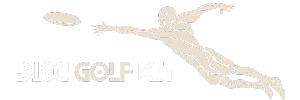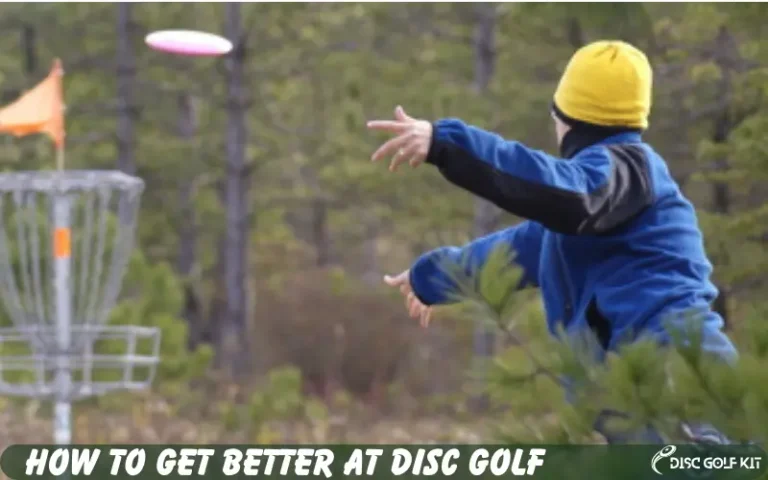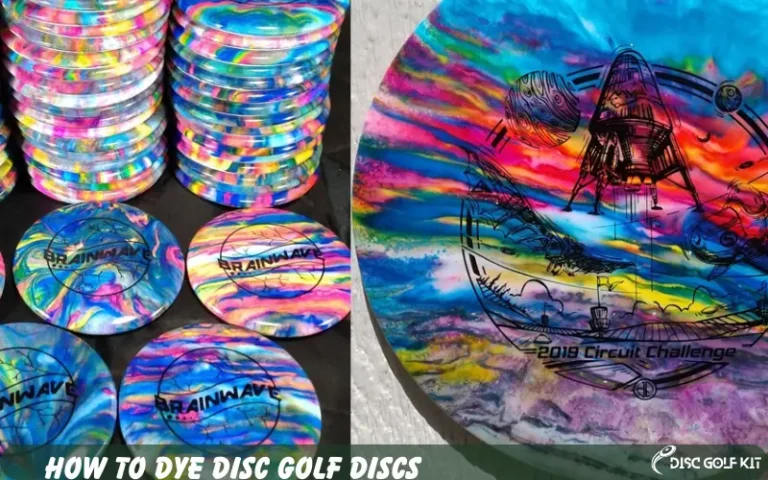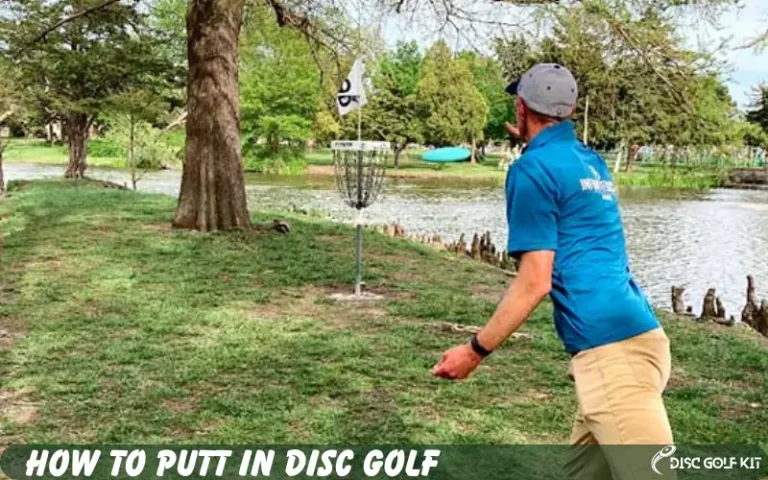
Disc golf has emerged as a front-runner in a world increasingly drawn to unconventional sports. This game, an inventive twist on traditional golf, has captured sports enthusiasts’ imaginations and become a social phenomenon. As more people ask, “What is disc golf?” it becomes crucial to explore its rich history, its rising popularity, and its various associated terms. Disc Golf, also known as Frisbee Golf, is an exciting outdoor sport that combines traditional golf with flying discs, commonly known as Frisbees.
Invented in the mid-20th century, disc golf has gained immense popularity, offering a fun and accessible way to enjoy the great outdoors while challenging your accuracy and precision. Whether you’re a seasoned athlete or a curious beginner, understanding the nuances of disc golf can open the door to a thrilling and accessible outdoor experience. This introduction will delve into the origins of disc golf, its journey to popularity, and the alternative name it goes by – Frisbee Golf.
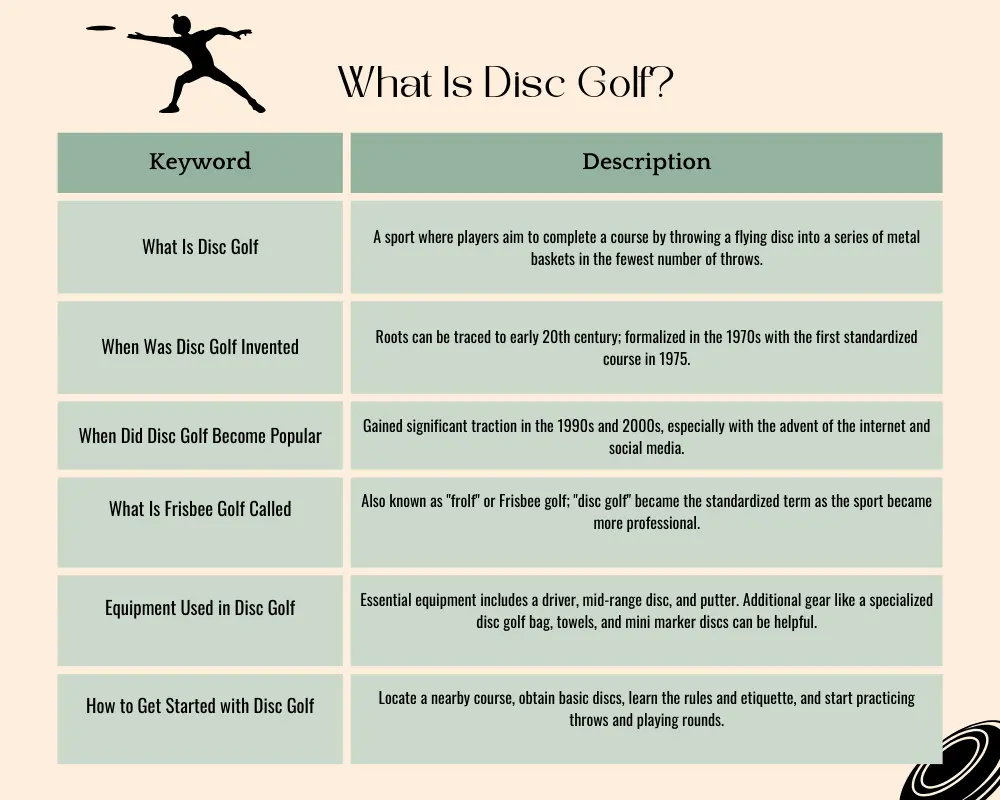
What Is Disc Golf?
So, What Is Disc Golf? At its core, disc golf is a flying disc sport that shares similarities with traditional golf. However, players throw a disc at a target instead of using a ball and clubs. The game aims to complete each hole in the fewest throws, much like achieving the lowest number of strokes in golf.
Definition and Basic Rules of Disc Golf
In a standard game, a disc golf course consists of 9 or 18 holes, each with a starting point known as the “teeing area” and a target—usually an elevated metal basket. Players begin at the tee and throw their disc toward the target, following specific throwing sequences until they successfully land the disc in the basket. Along the way, they must navigate various obstacles, such as trees, hills, or bodies of water.
There are different types of discs for different situations:
- Drivers: For long-range throws
- Mid-Range: For accuracy over distance
- Putters: For short-range throws and getting the disc into the basket
Disc golf generally begins with a coin toss to decide which player throws first. Subsequently, the player whose disc is farthest from the hole throws next. Penalties, commonly known as “stroke penalties,” can be incurred for various infractions, such as when the disc goes out of bounds.
Comparison to Traditional Golf
While disc golf and traditional golf share the same foundational goal—to complete each hole in as few strokes or throws as possible—they differ in several ways. One of the most noticeable differences is the equipment used. Traditional golf requires a set of clubs and a golf ball, while disc golf only necessitates a selection of discs.
Moreover, traditional golf is often associated with exclusivity, requiring expensive memberships and attire. On the other hand, Disc golf has built its reputation on being more accessible and affordable. Most disc golf courses are free to play, and getting started requires little more than purchasing a basic set of discs.
The terrain in disc golf is also more varied and tends to be more integrated with natural landscapes. It’s not uncommon to find disc golf courses in public parks, offering a more relaxed and informal experience. This makes the sport budget-friendly and more inclusive, attracting a wide range of enthusiasts from different walks of life.
Whether you’re familiar with traditional golf or not, disc golf offers a unique and exciting approach to outdoor activity, capturing the spirit of a time-honoured sport while making it accessible to almost anyone.
When Was Disc Golf Invented
The origins of disc golf can be traced back several decades, but the game as we know it today started taking form in the late 1960s. While people have been throwing flying discs around for fun since the invention of the Frisbee, the structured sport of disc golf began to emerge when courses were designed and official rules were established.
History and Origin of Disc Golf
The early beginnings of disc golf are somewhat debated, but one key figure in its development was “Steady” Ed Headrick, often called the “Father of Disc Golf.” Headrick was an executive at the Wham-O toy company, famous for popularizing the Frisbee. Intrigued by the potential of using Frisbees in a golf-like game, he designed and installed the first standardized disc golf target, the Disc Pole Hole, featuring chains and a basket, at a park in Pasadena, California, in 1975.
The sport gained credibility and structure when Headrick founded the Professional Disc Golf Association (PDGA) in the same year, establishing standardized rules and promoting organized events. This laid the groundwork for the sport to grow beyond a casual park activity into an organized sport.
Important Milestones in its Development
Disc golf has hit several important milestones since its early days. 1982, the first Disc Golf World Championships were held, giving players a global platform to showcase their skills. This was a pivotal moment that helped the sport gain international recognition.
Advancements in equipment have also played a significant role. Initially, players used basic Frisbees, but now, specialized discs are available for different throwing techniques and situations. This has led to a more nuanced and competitive game.
Another milestone came in the form of media coverage. The sport started being televised in the early 2000s, significantly broadening its reach and attracting sponsorships. Social media has further propelled disc golf into mainstream consciousness, with platforms like YouTube offering tutorials, highlights, and professional match coverage.
Today, disc golf is played in over 40 countries, and the number of registered PDGA members has soared, reflecting the sport’s growing global appeal.
From its humble origins to its current status as a globally recognized sport, the journey of disc golf is a testament to how a simple idea can capture the imagination of people worldwide. Its history is a series of events and a compelling narrative of evolution, innovation, and increasing public engagement.
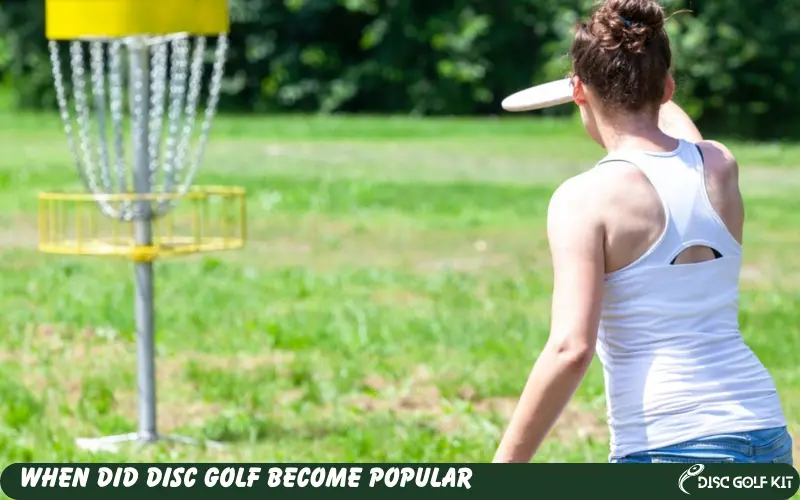
When Did Disc Golf Become Popular
While disc golf has always had a dedicated following since its organized inception in the 1970s, its widespread popularity has seen a noticeable uptick in the past two decades. The sport has transitioned from being a niche pastime to a mainstream activity enjoyed by millions around the globe. But when exactly did this transformation happen, and what were the key events that fueled it?
Timeline of Disc Golf’s Rise in Popularity
The late ’70s and ’80s saw the sport’s establishment by forming organizations and hosting professional championships. However, it was in the late ’90s and early 2000s that disc golf started to witness a more rapid growth in popularity. Around this time, the number of disc golf courses began to multiply, and more colleges started to offer disc golf as a recreational activity.
The 2010s marked a pivotal era for disc golf. An explosion of online content, including tutorials and professional match coverage, helped introduce the sport to a broader audience. This decade also saw a rise in professional players, dedicated shops, and even video games centred around disc golf.
The COVID-19 pandemic further pushed the sport into the limelight. With restrictions limiting many indoor activities, people turned to outdoor sports that allowed for social distancing, and disc golf fit the bill perfectly. This period saw a surge in course installations and a spike in equipment sales.
Key Events That Contributed to Its Growth
Several key events and factors have contributed to the meteoric rise of disc golf. One significant milestone was the televising of the sport. The game’s profile soared once disc golf began to be covered on sports networks in the early 2000s. Another important factor has been the role of social media and online platforms, where disc golf tutorials and matches attract millions of views.
The formation of associations and bodies like the PDGA Junior and Women’s leagues has made the sport more inclusive, attracting diverse participants. Corporate sponsorships have also played a role in bringing financial stability and mainstream credibility to the sport.
Events like the annual PDGA World Championships and the European Open have showcased the highest levels of competition and attracted international participants, thus strengthening the sport’s global appeal.
So, when did disc golf become popular? It isn’t easy to pinpoint an exact moment, but its growth has been a cumulative effect of organized development, media exposure, and increasing public engagement. The sport has expanded in terms of the number of players and courses and deeply embedded itself in modern sports culture.
What Is Frisbee Golf Called
As disc golf has grown, so has the vocabulary surrounding it. If you’ve heard the term “Frisbee golf” and wondered how it relates to disc golf, you’re not alone. Both terms are often used interchangeably but have distinct origins and implications for the sport.
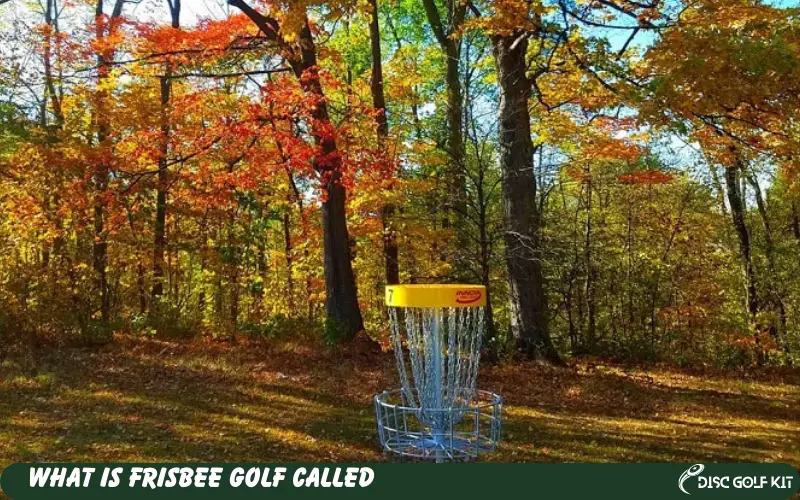
Alternative Names for Disc Golf and How They Came About
“Frisbee golf,” often abbreviated as “frolf,” is one of the earliest terms to describe the game. This name stems from the Frisbee, a brand of flying disc made popular by the Wham-O toy company. Because Frisbees were the most common type of flying disc used in the sport’s early days, many initially referred to the game as Frisbee golf.
However, as the sport became more organized and specialized discs were developed, the term “disc golf” gained prominence. This was partly to avoid trademark issues with the term “Frisbee” and to encompass better the variety of discs now used in the sport, which go beyond the original Frisbee design.
Other less common names you might encounter include:
- “Disk golf.”
- Using the alternate spelling for “disc.”
- Regional or colloquial terms that specific communities might use.
Discussion on Terminology and Its Impact on the Sport’s Identity
The terminology used to describe the sport isn’t just a matter of semantics; it also impacts the sport’s identity and perception. The term “Frisbee golf” may conjure a more casual, laid-back image reminiscent of a day at the park. On the other hand, “disc golf” evokes a sense of professionalism and athleticism, aligning more closely with the sport’s competitive aspects and governing bodies like the PDGA.
Adopting “disc golf” as the standard term has helped the sport gain legitimacy, separate itself from the recreational connotation of Frisbee games, and build a distinct identity. It has aided the sport’s branding, attracting sponsorships and formal recognition.
That said, regardless of the terminology used, the essence of the sport remains the same: a fun, accessible, and increasingly popular outdoor activity that combines precision, strategy, and physical skill. Whether you call it disc golf, Frisbee golf, or something entirely different, the game continues to draw enthusiasts for its unique blend of competition and camaraderie.
Equipment Used in Disc Golf
When diving into disc golf, one of the first things you’ll need to consider is the equipment. While the sport is relatively straightforward in its requirements, the right gear can significantly affect your performance and enjoyment of the game.
Brief Section on Types of Discs and Other Equipment Needed
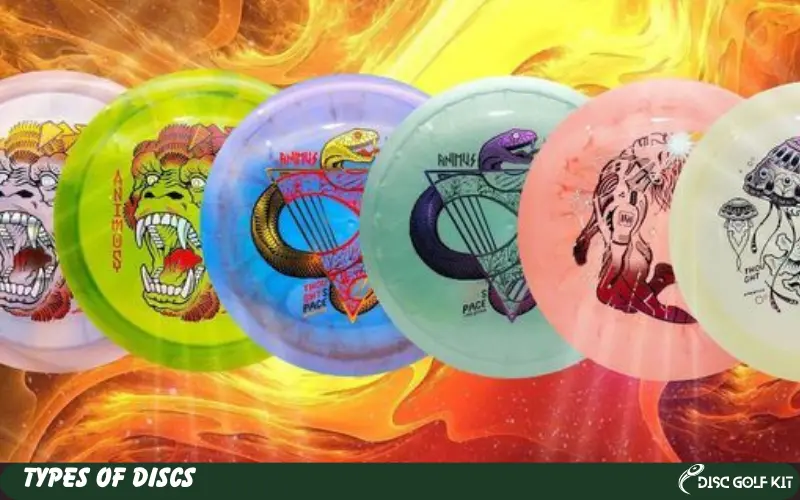
Types of Discs
In terms of discs, there are generally three main types that players use:
Other Equipment Needed
Aside from discs, there are a few other pieces of equipment that can enhance your disc golf experience:
While specialized equipment isn’t strictly necessary when you’re just getting started, investing in a few key items can make your course time more enjoyable and improve your game.
How to Get Started with Disc Golf
So, you’ve learned disc golf, its history, how it gained popularity, and even the equipment you’ll need. Now, how do you get started with this exciting sport? For newcomers, entry into disc golf is relatively uncomplicated and affordable, making it an excellent choice for individuals and families. Here’s how you can dive right in.
Steps for Beginners Interested in the Sport:
By following these steps, you’ll be well on your way to becoming a seasoned disc golfer, ready to tackle any course and perhaps even compete in tournaments. Disc golf is an inclusive, rewarding sport that offers endless fun and skill development possibilities.
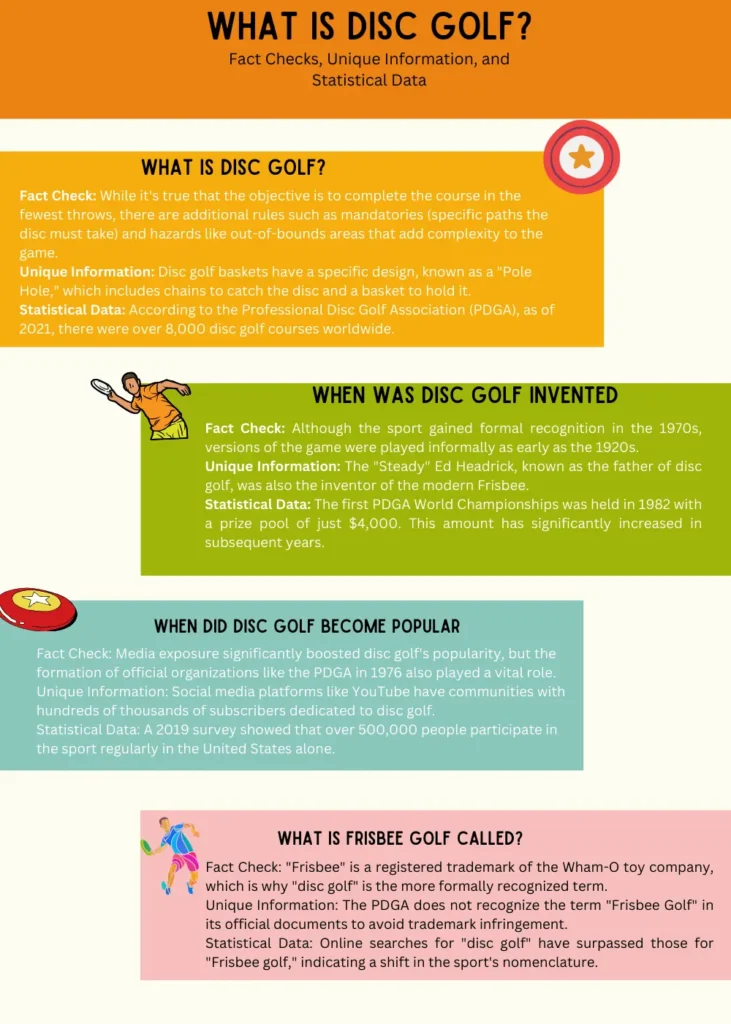
Conclusion
From its early days to its recent surge in popularity, disc golf has emerged as a sport that captivates many enthusiasts. What started as a simple game of throwing a Frisbee-like disc into metal baskets has grown into an organized, competitive sport with its own set of specialized equipment, rules, and global community. The sport has not only carved out its own identity distinct from traditional golf, but it has also broken barriers of entry that many other sports struggle to overcome.
Whether captivated by history of golf, excited by the range of equipment, or curious to try something new, disc golf offers an accessible and inclusive environment. With minimal startup costs and courses sprouting worldwide, anyone can pick up a disc and join the fun.
So, what are you waiting for? Take the plunge into the vibrant world of disc golf. Whether you’re looking for a new weekend hobby or a competitive pursuit, disc golf has something for everyone. Join the ranks of those who have discovered the joy, challenge, and community of this incredible sport. Get out there and throw your first disc today—you might just find your new passion.
Frequently Asked Questions (FAQs)

Article by
Peter Howell
I am an enthusiastic disc golf player and the mind behind DiscGolfKit.com. My aim to combine my passion and expertise to educate others about disc golf product reviews and create comprehensive buying guides. Stick around, and let’s elevate our game together.
